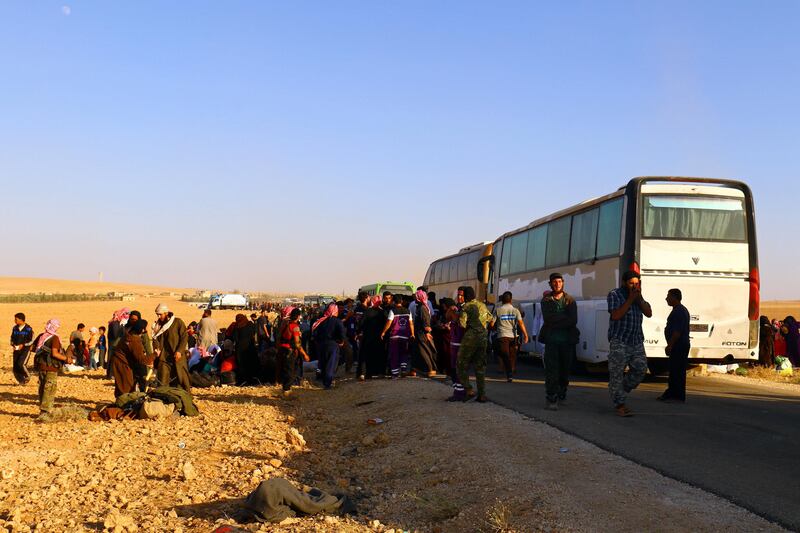More than 600,000 displaced Syrians returned to their homes between January and July, figures from the International Organization for Migration and partners show, as increasing numbers of civilians appear to be going back to a country still at war.
The number of returnees during this time, 602,759, was already close to the figure for all of last year — 685,662.
A quarter of those who returned this year said they had found the economic situation improved in their home area. But the experience of those who returned last year set has set a worrying precedent, with an estimated 20,752 and 21,045 displaced again in 2016 and 2017 respectively.
Eighty-four per cent of the 602,759 who returned to their homes between January and July this year had taken refuge elsewhere within the country, while the remaining 16 per cent travelled back from neighbouring countries Turkey, Lebanon, Jordan and Iraq.
----------------------------------------
Read more:
[ Rebels and refugees leave Lebanon enclave for Syria ]
[ Despite hardship of living in Lebanon, Syrians don't envy returning refugees ]
[ Jordan makes it easier for Syrian refugees to work ]
----------------------------------------
An estimated 27 per cent said they returned home to protect their assets or properties, while others cited worsening economic situations in the places they were seeking refuge (14 per cent), obstacles preventing integration in the places they had fled to (11 per cent) and an improvement of the security situation in the places they were returning to (11 per cent). Cited obstacles preventing integration included social or cultural issues such as tribal links and political affiliations.
Most returnees — an estimated 67 per cent — went back to the northern province of Aleppo, while 75,209 returned to the central province of Hama, 45,300 to the northern province of Raqqa, 27,620 to the northwestern province of Idlib, 21,346 to rural Damascus province and 27,861 to other provinces.
Aleppo city was the area that received the most returnees, followed by the sub-district of Al Bab in Aleppo province, the sub-district of Hama in Hama province, the sub-district of Menbij in Aleppo province, and Al Khafsa sub-district, also in Aleppo province.
Despite 25 per cent of Syrians who returned home saying they had had found the economic situation in their areas improved, the access of returnees to basic services and infrastructure remains of grave concern. IOM said only 41 per cent of those who returned had access to water, while even fewer — 39 per cent — had access to health services. And although access to food and household items was much higher, 83 per cent and 80 per cent respectively, those figures reveal that thousands of returnees were still going back to a situation where they were struggling to survive.
Meanwhile, although the numbers returning to Syria seem to be on the rise, levels of displacement continue to be high. From January to July, an estimated 808,661 people were displaced, many for the second or third time, IOM said, while over 6 million people currently remain displaced within the country.





